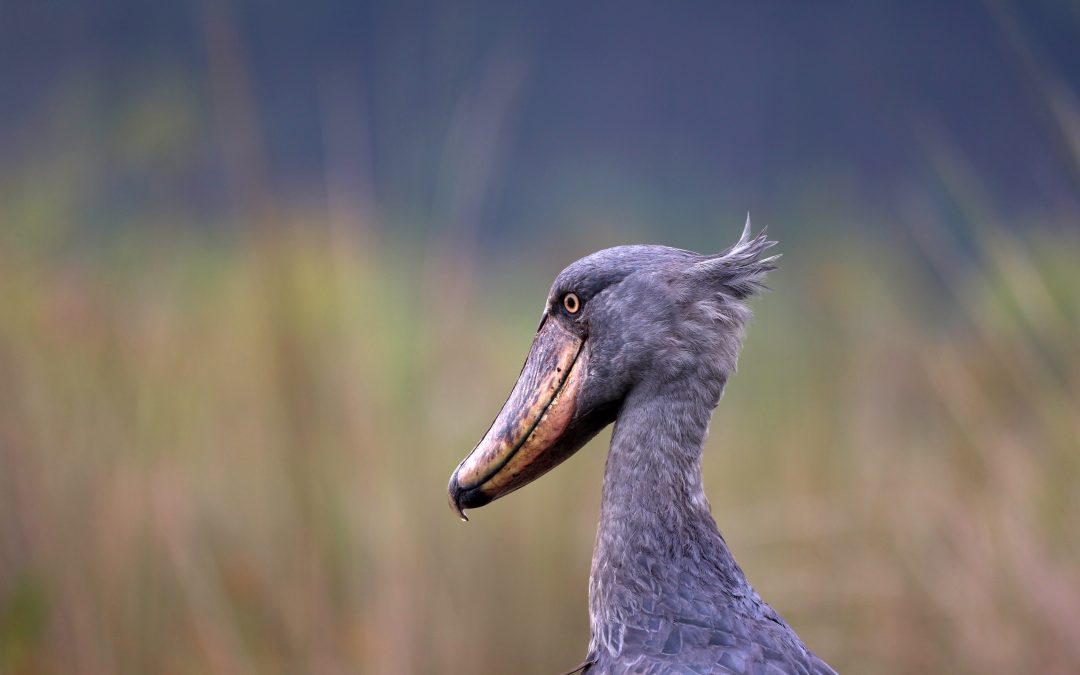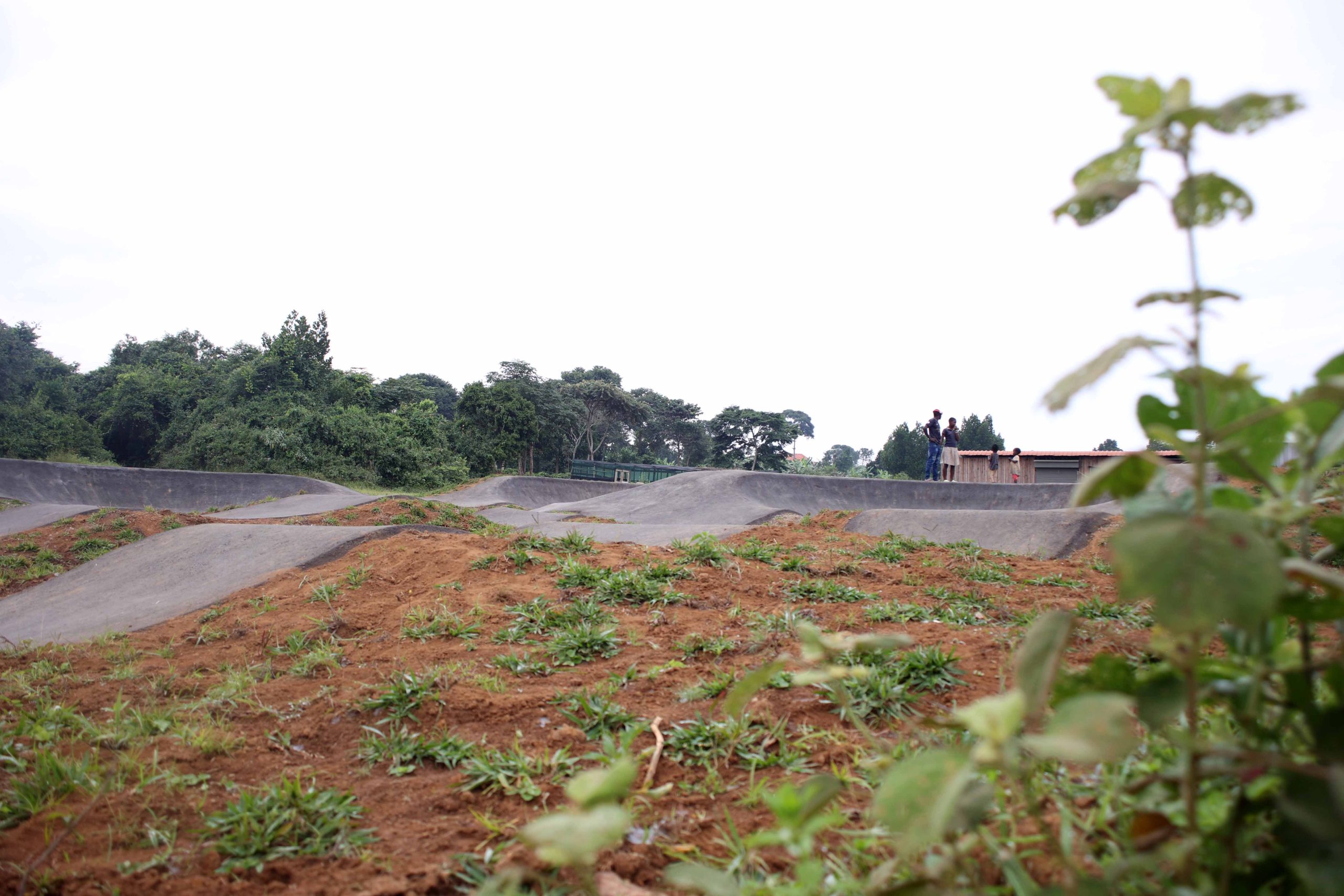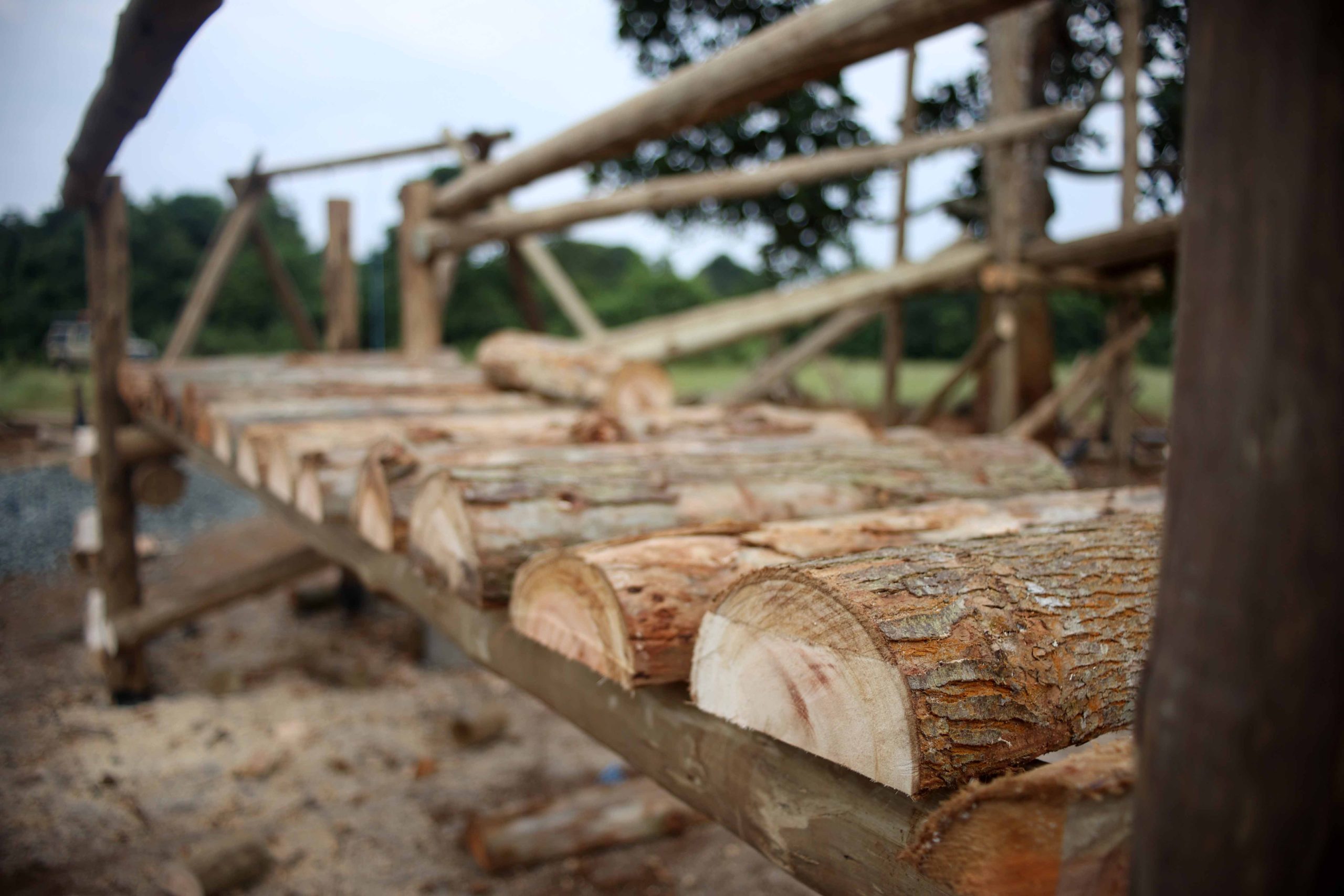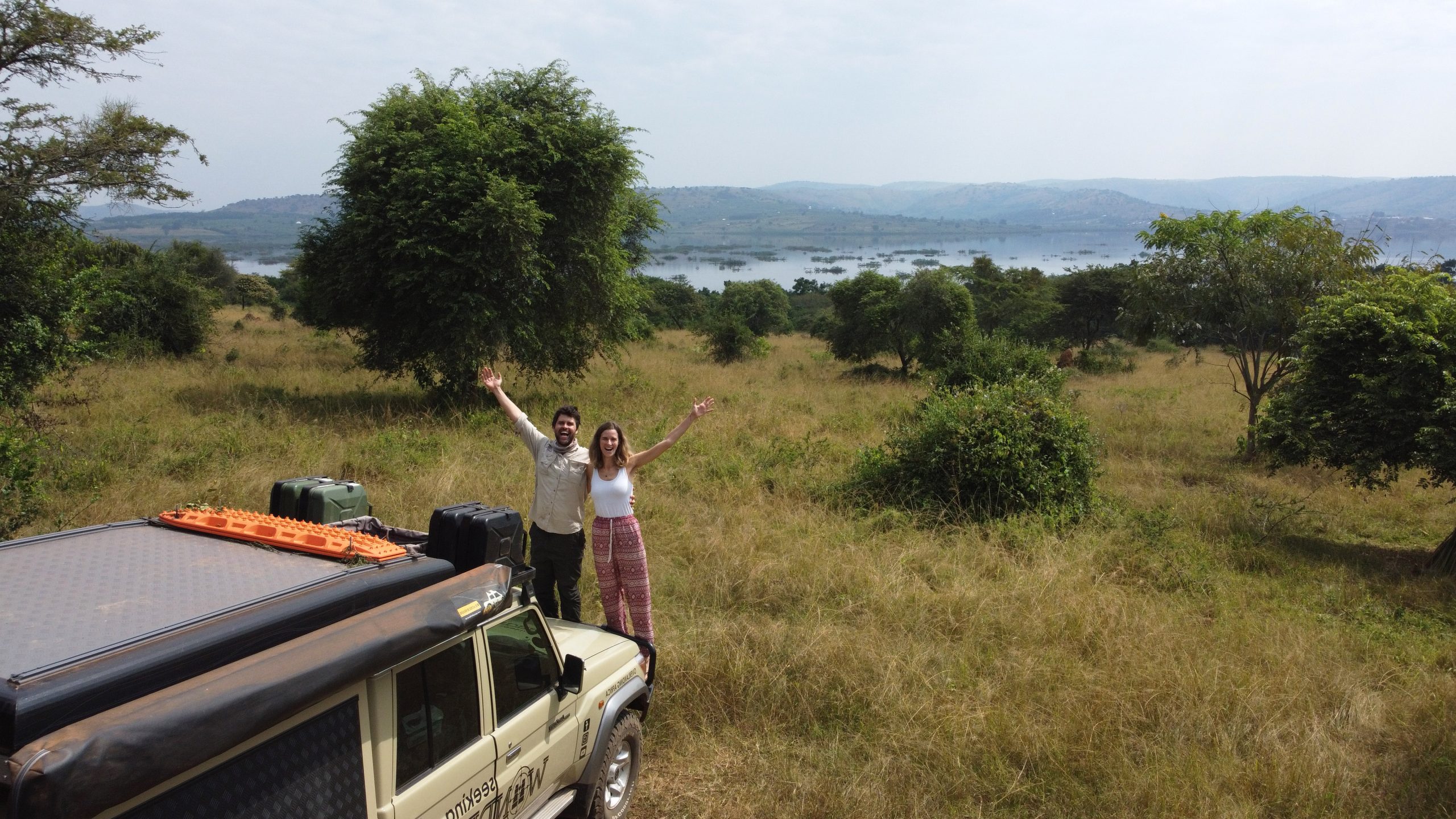
Doing the Mburo Mabamba Mambo
Never believe a Ugandan park official when they say all roads are passable now that it is dry season. We have come to understand that dry season in equatorial Africa means it rains only once a day. In the Mburo National Park we also found out that our Max Trax are in fact very useful and not merely aesthetic add-ons while doing the cotton soil mambo in Baloo. We have learnt many things since arriving in Uganda. We entered the country via the Mutukula border post, a busy crossing not often used by tourists but very well frequented by persistent (read irritating) fixers and some officials that unfortunately personify the corrupt stereotype. The meaning of Karen Blixen’s age-old observation becomes clear at African border posts: “It helps to be willing to waste more time over a matter than (the official) does himself, only it is a difficult thing to accomplish.”



Heading into the town of Masaka, it immediately became clear that this is a unique country. Broad-billed Rollers (something we have only seen once in South Africa) sit on power lines like feral pigeons. A thousand boda-bodas (the ubiquitous East African motorbike taxis) weave through traffic like safari ants. Exotically noisy Plantain Eaters forage among suburban trees. We recovered from the day’s admin at Villa Katwe, a little backpacker’s lodge where Joey the buffy dog happily greets everyone, we sampled fried grasshoppers (yes, they do taste like chicken) and we had the best dinner and breakfast in a very long time.
Travelling through the beautiful Ugandan countryside is very different to what we have experienced thus far. Between the bustling little rural towns, we passed through countless banana plantations, over green hills, and through lush green landscapes. It is very densely populated, yet the general sense of natural greenery is omnipresent. We reached lake-side Kacheera, our first campsite, after getting lost along a scenic dirt road where large-horned Ankole cattle mix with zebra and Grey Crowned Cranes. Mornings were met by a cacophonic chorus of birds. Gonoleks and Grey-crowned Warblers chatted around camp, Bare-faced Go-away Birds and Brown Babblers babbled away, and Wattle-eyes foraged carefully among the trees with their Batis-like calls.



Lake Mburo National Park was our first nature-focused destination, and we camped at the conveniently located Leopard Camp just outside. A beautiful Savannah-type park, Mburo is home to Uganda’s only impala herds, an interesting strain that has exceptionally large horns. We also saw Rothschild’s giraffes with calves, sporting their characteristically thicker white sections between the brown blocks. The park has various beautiful marshy glades, ridges, forested lake edges and many euphorbia trees that reminded us very much of the Mokgopong area in South Africa’s Limpopo province.



Now about that mud. We know that black cotton soil is something to avoid. But what we did not know, is that it can be very localized and it takes very little rain to make it stick to you like a border post money changer. After our lakeside lunch got drenched by a bout of unseasonal rain, we set off on what seemed to be a well-travelled path. All was well, until it was not. We did not even notice the ever-so-slight change in mud colour, and suddenly there we were, Baloo doing a muddy wheel-spinning mambo without any trace of traction. Had it not been for our good old Max Trax sand ladders, we might well have camped there. Spending the better part of the next day washing the cotton soil out, we vowed to henceforth avoid any suspiciously black mud unless it at least cracks under foot.



Traveling north, we crossed the equator for the first time. A momentous occasion for us dampened slightly by the rather touristy village where muzungus (i.e. white travellers) frequent expensive curios shops and locals are keen to demonstrate water flowing to a drain without swirling in any direction. A bit further on is Nkima Forest Lodge where we set up camp for a few days. Nkima is located in a patch of lush indigenous forest on an isolated hill overlooking the Mabamba swamps. Here we were awed for the first time by many of Uganda’s wonderful forest-dwelling creatures. Shy red-tailed monkeys foraged in the treetops while Giant Blue Turacos and Black-and-white Casque Hornbills raucously danced between branches. African Emerald Cuckoos woke us up every morning with their ‘Hello Georgie’ calls and we were even lucky enough to catch a glimpse of a White-spotted Flufftail darting in the undergrowth next to our campsite – in birding circles this is reason alone for a victory dance!



The Mabamba swamp is a semi-protected wetland on the fringes of Lake Victoria, literally within sight of Entebbe Airport. Unexpectedly for its proximity to civilization, it is a birding hotspot and provides suitable habitat to many wetland species. The big-ticket bird here is the Shoebill, which simply loves the many lungfish around these swamps. We headed out in a local boat with a community bird guide who did an impressive boogie-like balancing act standing on the bow while he scanned the papyrus for signs of the elusive grey giant. After our long day searching for one in Zambia’s Bangweulu, we prepared for a similar escapade. Big was our surprise therefore when, twenty minutes in, we pulled up almost right next to a hunting Shoebill! This pre-historic looking bird gave us an unforgettable show of flying, prancing on floating reeds, intense focusing and even catching breakfast. We can only hope that this fragile habitat remains protected for these magnificent creatures to flourish.



Near the swamp we stopped by a community project called Kasanje Cycling. Coordinated by Sam Mutton, a professional-grade cycling track was built earlier this year for local kids to use. At first glance one must do a double-take of this seemingly out-of-place sports course between banana plantations and muddy roads. But considering how widely used bicycles are every day in Uganda, it is little wonder that the course was filled with children having an absolute blast doing bike tricks when we visited. Along with a crew of UK-imported and big-hearted folks, Sam is currently busy with a beautiful play park and café next to the course and has plans to create a self-sustaining centre for the community through the medium of cycling. The project is an inspiring example of how it is indeed possible to make a sustainable difference to a community.



As we drive further through the countless villages, we pass a ragtag school marching band raising funds next to an open-air butchery. An old man with a chicken clasped under his arm does a roadside shuffle on the band’s beat. We smile. From muddy forests and swamps with rare creatures, to communities being content with a very different standard of living from what most westerners consider normal. The dance of a happy life is not one easily learnt, but we think Ugandans might just be a few steps ahead.



Some helpful trip tips:
- Mutukula border post
- Get your East African tourist visa on Uganda’s website beforehand. It takes two days to process online: https://visas.immigration.go.ug/
- Be prepared for security personnel wanting to confiscate pepper spray and drones.
- Officials might just want ‘a little something’ after they help you. Be friendly but firm.
- Network
- MTN is the best network in Uganda.
- Lake Mburo National Park
- A daily permit for you and your vehicle lasts 24 hours from when you enter, so plan your visit.
- A foreign vehicle permit is 50-60 USD for a pick-up/bakkie. They might try to charge more for a 4×4, but it helps to argue this point if needed.
- There is a beautiful and cheap UWA campsite in the park near the lake.
- Watch out for black soil after rain!
- Mabamba Swamp
- Shoebill tracking is relatively affordable here – simply arrive at the Mabamba jetty and book a local guide, or contact Shakul from https://www.mabambatours.com.
- Campsites
- Masaka: Villa Katwe provides great value for money and fantastic meals.
- Lake Mburo NP: Leopard Camp has a great location just outside the park.
- Mabamba: Nkima Forest Lodge is a friendly place in a beautiful forest.

